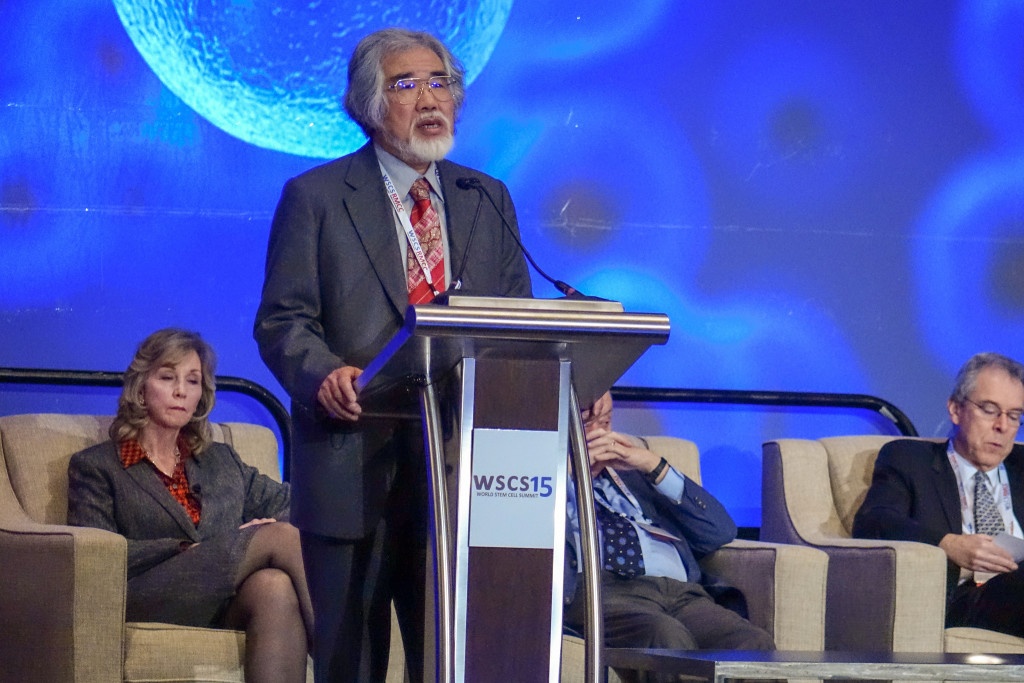*Photo courtesy of Mayo Clinic. Source: https://flic.kr/p/BZSvVA
“Speed Dating” for Investors, De-extinction, and New Business Initiatives
Today was another incredible day a the World Stem Cell Summit (#WSCS15). Because of the jam-packed scheduled that runs from 7:15am breakfast networking through to an evening social, it is affectionately called “Fantastic Friday.” The day launched with speakers such as Dr. Joshua Hare and Dr. Tatsuya Shimizu discussing how mesenchymal stem cells (MSCs) can be used to repair and regenerate the human heart, either by directly stimulating the micro-environment or by stimulating the activity of muscle stem cells. Shortly thereafter, talks expanded to focus on other stem cell types, including induced pluripotent stem cells (iPCSs), which were explored in greater detail during a lunch-time “Japan Symposium” that featured presenters from FUJIFILM Corporation, Ajinomoto Co., Inc., Cyfuse Biomedical, and Kyoto University.
Perinatal stem cells types, including cord blood and cord tissue (Wharton’s Jelly) stem cells also received attention today, alongside other perinatal cell types, including cells from the amnion, amniotic fluid, chorion, and placenta. The talks were led by Kyle Cetrulo, CEO of Auxocell and host of the upcoming Perinatal Stem Cell Conference on March 2-4 2016, which BioInformant is sponsoring. Cord blood icon Dr. Joanne Kurtzberg presented on her work leading Duke University’s widely recognized pediatric transplant program, which treats children with cancer, blood disorders, immune deficiencies, and more. She explored how cord blood stem cells may address cognitive decline in pediatric autism patients, presenting findings from her recent clinical trial “Autologous Umbilical Cord Blood Infusion for Children with Austism Spectrum Disorder (ASD),” supported by the The Marcus Foundation and PerkinElmer, Inc. While not scientifically relevant, her anecdotal comments and follow-up photos of the patients were also very interesting.
In the afternoon, the talks I attended were centered on the theme of improving innovation in cell manufacturing. As Jon Rowley of RoosterBio aptly stated, “Product innovation tends to come first, followed by process innovation.” We have had a great deal of product innovation with stem cells to date, and now we need greater process innovation to allow bio-manufacturing to promote therapeutic applications of the cells.
Dr. Vanek of GE Healthcare discussed how “liquid circuitry” could de-risk the cell bio-manufacturing process by never letting cells see the ‘light of day,’ a concept that could potentially allow cell processing to occur in any environment, no clean room required. I also learned from that presentation that GE recently announced the launch of a new business unit, GE Digital, a transformative move that will bring together the digital capabilities from across GE into one division. The move will also position GE to compete with IBM, as it has stated it intends to be a top 10 software company by 2020.
There were incredible RegMed Company Presentations given today, where I am continually impressed at how the speakers capture their company’s life work in 12 minutes or less. It is “speed dating” for regenerative medicine investors. Several topics of importance to men were addressed, including cellular methods for addressing baldness (presented by Gail Naughton of Histogen) and regenerative approaches for re-growing the foreskin of circumcised men (Eric Clooper of Foregen).
I continue to be intrigued by the work of Jon Rowley at RoosterBio, who also gave a company presentation. The essence of his presentation is captured by quoting his introduction, where he stated, “We think about stem cells differently. We think of them as a technology, like a transistor or a microchip.” Because RoosterBio focuses on the future applications of mesenchymal stem cells (MSCs), it is not surprising that it is involved in the areas of 3D bioprinting and efficient bioreactor expansion of human MSCs.
There was also a standing room only presentation given today by Dr. Franklin West and Dr. Jeanne Loring, titled “Evolution and De-extinction: The Frozen Zoo and Cloning the Mammoth.” It seems we are all curious about the topic of “de-extinction” and whether the movie Jurassic Park could have some specks of feasibility. It was not surprising that at least one talk would spill into the hallway, because the World Stem Cell Summit brings together 1,200 curious minds from more than 40 countries, putting brilliant speakers on stage and packing rooms with eager listeners.
I also enjoyed connecting with key start-ups and stem cell innovators today, including Orig3n‘s Chief Business Officer, James Lovgren, who did an exclusive interview with me this afternoon, released live on our site here.
Again today, the speakers were spinning gems of wisdom and I took care today to capture some of the best. I will be releasing the Top 10 Quotes for Day 2 of the World Stem Cell Summit by morning. Enjoy and see you bright and early tomorrow for the Networking Breakfast, so we can kick off the final day of this event with food, and importantly for me, coffee.
To get tomorrow’s updates, follow me on Twitter @StemCellMarket and follow the hashtag #@WSCS15. Good night!
Want to get future stem cell industry updates? Join below and we’ll keep you in the loop.
